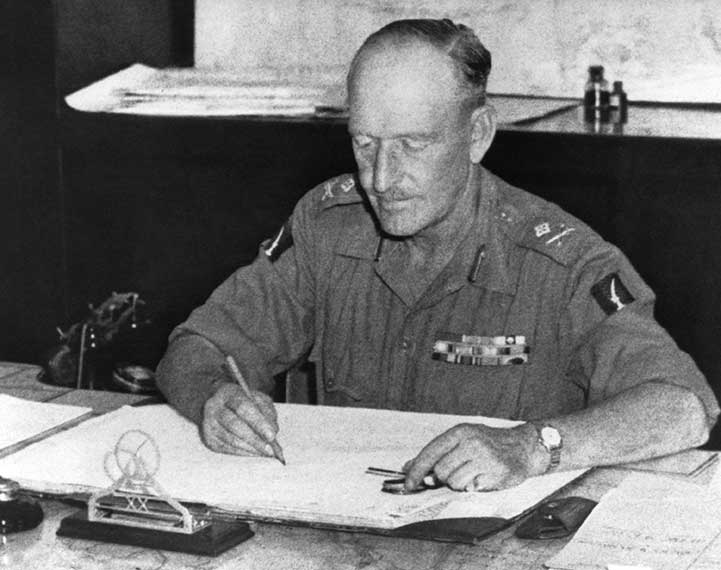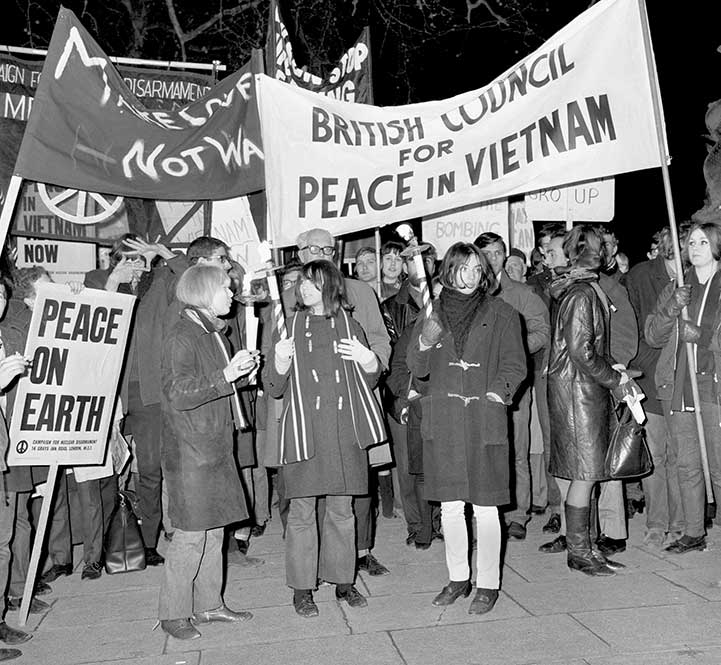
Select Language: tiếng Việt
British Links to Vietnam
As World War Two (WW2) came to an end, however, Vietnam’s conflicts turned into international affairs, meaning that Britain, still a major player on the world stage, was to become involved in the fate of this South East Asian country.
At some points, such as in the aftermath of WW2 and during the refugee crisis that followed the Vietnamese Communists’ victory in 1975, the British government and/or military took up an active role in Vietnamese affairs. At other times, such as at the close of the French war and during the US conflict in Vietnam, Britain steadfastly refrained from interfering in the former French colony.
In sum, the track record of the British government and military in Vietnam is a mixed affair, combining instances of benign actions with episodes in which, motivated by international political considerations, they arguably did not act in the best interests of the Vietnamese people.
Ordinary British citizens, by contrast, have had a more straightforward and positive historical relationship with the Vietnamese people, having adopted a sympathetic and supportive stance towards them during the US war and the refugee crisis that followed it. British people protested violently against the US war during the 1960s and welcomed and supported Vietnamese refugee families during the late 1970s and 1980s.
While there is some debate in academic circles about whether or not the British General in Saigon, Douglas Gracey, was following orders from Lord Mountbatten, Commander of South East Asia Command, or acting independently when he quashed the Viet Minh in Saigon, there is no doubt that he did everything in his power to prevent the Viet Minh from gaining control in South Vietnam’s capital.

Major Gen. Douglas H. Gracey, chief of the Allied Control Commission in French Indochina, at his desk on Dec. 3, 1945. (AP Photo)
As soon as Gracey arrived in Saigon on September 6th 1945 with his Nepali and Indian troops, he made his intentions clear by refusing to acknowledge the existence of the Viet Minh. Indeed, it was reported that he strode straight past the Viet Minh delegation at Tan Son Nhut airport in Saigon.
Speaking about his Saigon experiences later on, Gracey said: “I went out there after the war and saw the French after they had been through a most uncomfortable time with the Japanese….I was welcomed on arrival by the Viet Minh, who said “Welcome” and all that sort of thing. It was a very unpleasant situation, and I promptly kicked them out. They were obviously communists.” (Springhall, 2005: p115)
When the Viet Minh called for a general strike in Saigon on 17th September, Gracey responded by declaring martial law and releasing and arming French soldiers imprisoned by the Japanese. These soldiers, enraged at having had their houses and businesses taken over vengeful Vietnamese, exacted a bloody revenge, killing any Vietnamese people they deemed responsible for their plight. Gracey’s own soldiers also played a vital role in the crackdown, paving the way for the French actions by removing control of Saigon’s main buildings from the armed Viet Minh police.
In response, on September 24th the Viet Minh and a mob of Binh Xuyen gangsters stormed into Cite Herault, a European residential suburb, and slaughtered 150 French and mixed race (European-Asian) men, women and children. From this point onwards, conflict continued in Saigon and the surrounding area for years to come, a fact that has led historian Stanley Karnow to mark the date of September 24th as the start of the first Indo China war.
After the Cite Herault massacre, both the French and Britain’s Indian and Nepali troops were involved in vicious fighting across the city. “In one clash with 80 Indian Infantry Brigade on 26 September in the south of the city, 60 Vietnamese were killed. Mortars, 25 pounders and heavy machine-guns were freely used by the British in the street fighting.” (Newsinger, 2006: p200)
The fighting became so intense that the British took the bizarre step of rearming their recently defeated and disarmed enemy, the Japanese, and ordering them help fight against the Viet Minh. Gracey had earlier delivered an ultimatum to the Japanese commander, Field Marshal Count Terauchi, that he would be held as a war criminal if his men did not assist in the maintenance of law and order in Saigon. The official history of the 20th Indian Division said that “all the dirty work, to fight and disarm the Vietnamese was assigned to the Japanese troops.” (Springhall, 2005: p125)
In October 1945 large numbers of French troops began arriving and by December a relieved Gracey was able to hand control of Saigon over to the French General Jacques Philippe Leclerc. By March 1946 most troops under British command had left, with only some specialist soldiers remaining. In their short Vietnamese adventure, the British had lost 40 men and killed 600 Viet Minh fighters.
Although the official policy of the Labour party at the time was to maintain a neutral stance in the fight between the Viet Minh and the French, records indicate that the British government in fact did want to help the French back into their colony.
One indication of this is the statement made by J.C. Sterndale-Bennett, the head of the Far Eastern Department at the Foreign Office, when he was clarifying British policy in Vietnam to one of Mountbatten’s advisors. “We want to see French Indo-China restored to France, not merely as part of our general policy of building up a France friendly to us, but in the interests of stability in the Far East,” he said. (Springhall, 2005: p129) The mission had therefore served its purpose. As one senior French officer told Mountbatten, “Your Gracey has saved the French in Indochina.” (Newsinger, 2006: p201)
However the arrival of high level French officials and large numbers of French troops in Saigon by no means spelt the end of hostilities in the South. On a military level, Leclerc was never able to pacify the Viet Minh in the country side of the South, his troops being harassed by enemy guerrillas wherever they went.Meanwhile French political manoeuvres in South Vietnam (or ‘Cochin China’ as the French called the southern part of Vietnam) merely aggravated tensions and stored up problems for the future. Indeed, the newly appointed High Commissioner for Indo China, Admiral Georges Thierry D’Argenlieu, poisoned future attempts to avoid war by setting up an Advisory council for ‘Cochin China’ which was wedded to the idea of keeping the south of the country under French control.
After helping the French re-establish themselves in Vietnam at the end of WW2, the British watched from the side-lines as France waged a nine year war against its former colony. In 1954, when the French forces were facing collapse, the US floated the idea of launching a joint military intervention with Britain to save them. The proposal was shelved, however, when Churchill said Britain wouldn’t join such a venture. Churchill argued Britain couldn’t be expected to put British lives on the line to keep Vietnam in the French Empire when it hadn’t been willing to use its troops to keep India in the British Empire.
With Britain and the US both refraining from engaging in direct military intervention on France’s behalf, France’s bid to remain a colonial power in Vietnam finally collapsed in 1954. At the Geneva Conference that brought the conflict to an official end, Britain played a role as a co-chair. However, Britain was peripheral at the Conference, sidelined by the power plays carried out by the US and the Communist Bloc. Indeed, the key players at the Conference were the US, which pushed for the creation of a non-communist section of Vietnam, and Russia and China, which pressured their communist ally, the Viet Minh, to accept a partition.
During the period when US policy was to suppress the communist forces in Vietnam using its own troops (roughly 1965 to 1969), the position of the British government was rather contradictory: it consistently declared its desire to bring about peace by negotiation, and urged restraint on the part of the US, yet refused to distance itself from their aggressive actions.
Such a position caused the contemporary Labour governments of Harold Wilson great difficulties, causing it to come under fire from both ends of the political spectrum: the left, led in parliament by Michael Foot, was not happy that the Government would not outright condemn the actions of the US, while the right, embodied by the irrepressible Enoch Powell, was critical of the excessive degree of subservience which was being shown by the UK towards America.
The reality was that the chances of a negotiated peace were essentially zero while foreign troops, mainly American but also Korean, Australian and Thai, remained in Vietnam, their removal being a non-negotiable precondition set by Ho Chi Minh for joining negotiations.
The purpose of this political tight-rope walking by the British was therefore not so much an attempt to bring about a rapid end to the war, but predominantly an attempt to simultaneously appease both the anti-war feeling prevalent throughout the country and the pressure from the Americans to provide material, as well as moral, support for their anti-communist cause.
From the moment that the US began ground operations in Vietnam, there was an expectation in Washington that the UK would be providing troops to help stem what they perceived to be the rising tide of International Communism in the East.
After all, Britain’s recent past indicated it was both able and willing to quash communist forces in Asia. Britain had enjoyed considerable success in its conflict with a jungle-based communist insurgency in Malaya during the 1950s and the country still had significant numbers of troops stationed in Malaya and Singapore. Perhaps most importantly, Hong Kong, then under British administration, could be directly affected if Vietnam were to fall to the communists.
The expected British involvement never came. Prior to 1966, the minority Labour government was able to use the precariousness of its electoral position to preclude any such involvement. When in that year they gained a workable Commons majority the argument against British involvement in Vietnam changed, with the British now citing the conflict of interest between their role as Co-chair of the Geneva conference and that of a potential combatant.
In reality, the reason for Britain’s reticence on this issue was very simple: the overwhelming weight of public opinion was against such action. Due to the lack of constant opinion polling and surveying which is so central to perceptions of public opinion today, it is difficult to exactly quantify the strength of anti-war feeling of the contemporary British public, however the persistence of the anti-war protest movement in the UK, coupled with its class crossing nature, does seem to indicate that this feeling was indeed strong and widespread.
Evidence of the discontent of the British public with the actions of the US in Vietnam was present even before the influx of ground troops in 1965. The first notable protests outside the American Embassy in London occurred in April 1964, while in July of that year no less a public figure than the philosopher Bertrand Russell wrote a letter to the editor of the Times in order to express his revulsion at the “crime against humanity and stain on the honour of Britain” taking place in Vietnam.

Marchers in London call on the US government to endthe war in Vietnam. (AP Photo)
As would be expected, the scale of the anti-war protests tracked closely the scale of the war itself, and particularly the level of US involvement; the number and size of the protests increased rapidly post-1965, and reached their zenith around 1968 when over 10,000 people protested outside the US embassy in Grosvenor Square.
In addition to the regular set-piece confrontations with police and the public hand wringing of notable figures, there were also many small scale, and often symbolic, protests against the war throughout its duration: the US flag was pulled down from Westminster Abbey, 6 London theatre stages were simultaneously invaded by protestors mid- performance, the then Prime Minister Harold Wilson was shouted at from the public gallery in the Commons and, perhaps most amusingly, Sir Robert Menzies, the Lord Warden of Dover port, was assailed using “insulting language’’ by two teenagers on his public installation.
Although it is difficult to draw any concrete conclusions from such anecdotes, it seems fair to say that the fact that such a wide variety of protests were able to occur indicates that there was a sizable sense of dissatisfaction with the British government’s backing for the US. If Britain had acquiesced to the wishes of the US government and allowed its own troops to fight in Vietnam, it can only be assumed that this would have led to still greater levels of protest, and potential electoral disaster for the Labour government.
